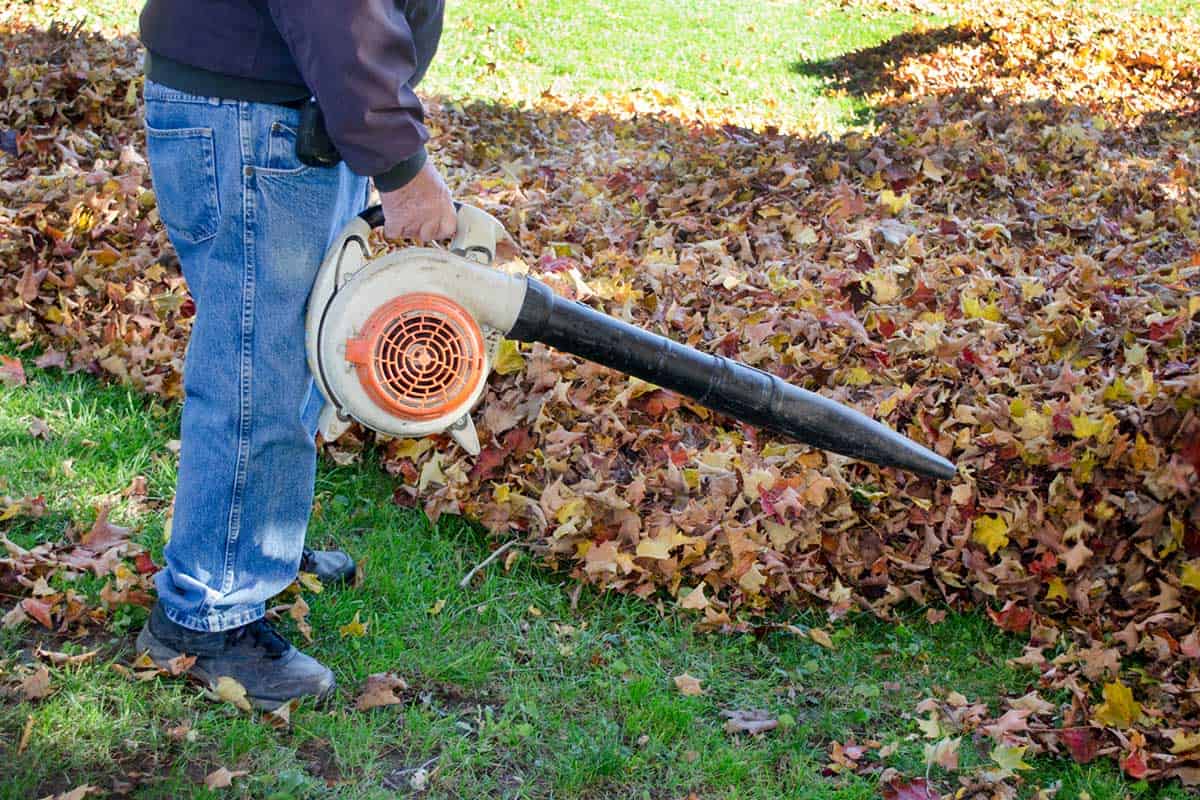This page may contain affiliate links. If you click and buy, we might get a small commission at no cost to you.
Nothing is more frustrating than walking back outside after a long morning of yard work, only to find your neighbor’s leaves blown onto your lawn. Not only can this feel like a nuisance, but not taking care of the problem can lead to issues with your lawn and with HOA if you live in an HOA neighborhood. But, can you blow your neighbor’s leaves back into his yard without getting into trouble? That’s what we discuss in this article, along with some alternative solutions.
Can I Blow My Neighbor’s Leaves Back Into His Yard?
You may be tempted to blow your neighbor’s leaves back into their yard, but you shouldn’t do this. Not only is it rude to your neighbors, but you may also face nuisance fines for not using proper lawn care etiquette. Additionally, your neighbor may pursue legal action if it’s a continuous problem.
How to Properly Dispose of Fallen Leaves
When leaves fall onto your property, it’s up to you to dispose of them. Depending on where you live, you’ll have more or less freedom in choosing a disposal method. Some state and city ordinances may require you to bag your leaves or place them in a pile along the road to be picked up.
On the other hand, some states allow you to burn your leaf piles in a controlled environment. Let’s briefly discuss the possible disposal methods you have to choose from.
1. Blowing Them Into a Forest
If you live on a wooded lot, you may consider blowing your leaves into the wooded area around your house. Leaves provide natural ground cover in forest environments and are a source of food and shelter for many animals.
When using this disposal method, be sure to blow them deep into the woods. You risk the foliage blowing back into your yard again if you don’t.
2. Bag Them Up
Some cities may only pick up leaves if they’ve been bagged properly. While some cities may only pick up leaves in clear plastic bags, others will require a recyclable option. Depending on the size of your property, you may need a lot of bags.
Making sure you have enough bags can be cumbersome. However, bagging your leaves is the best way to prevent them from blowing back into your yard while waiting for leaf pick up.
3. Place Them by The Road For Pick Up
Bags aren’t required for most city leaf pick-up services. To make it easier on you, all you need to do is rake or blow them to the side of the road in front of your house. Before doing this, consider finding out when your neighborhood is scheduled for leaf pick up. This way, you can wait to prepare the leaves until closer to the pickup date.
On the day of leaf pick up, your city’s pick-up vehicle will use a special vacuum to suck up your leaf pile.
4. Compost Them
A good compost pile has equal green matter to brown matter. The leaves that land in your yard are considered brown matter when it comes to composting. These materials add to the decomposition of green matter, so it’s important to have plenty of it.
Instead of blowing them all to the road, consider saving a bag or two to add to your backyard compost bin.
5. Mulch Your Leaves
Another option to consider is to gather all of the fallen leaves and run them through a mulcher. This will break the leaves up into tiny pieces that can be scattered throughout your lawn. Over the course of a week or two, the mulched leaves will decompose into the ground and leave you with a healthier lawn.
6. Utilize Controlled Burns
Leaf burning isn’t allowed in every state, so it’s important to check with your state’s laws beforehand. The Environmental Protection Agency recommends composting or mulching your leaves instead.
If you choose to burn your leaves, be sure to only do so in small piles. Your leaf piles shouldn’t reach any higher than three feet in diameter in a cleared area of ten feet in diameter. Your pile should also be at least 25 feet away from a structure and only done so on days where winds are less than 10 mph.
Who is Responsible for Fallen Leaves?
The person responsible for fallen leaves is whoever owns the property the leaves have fallen on. Instead of blowing leaves back to your neighbor’s property, utilize them to benefit the soil of your property.
Addressing Any Issues
If you find yourself in a situation where your neighbor is purposely blowing leaves into your yard, your first step should be to address the problem with your neighbor. When confronting them, try to do so as respectfully as possible. In turn, your neighbor may feel guilty for doing so and the two of you can work out a system for leaf disposal.
If your neighbor is still acting in a hostile manner, you may want to consider filing a complaint or pursuing legal action.
How to Prevent the Issue From Reoccurring
If talking to your neighbor hasn’t helped the issue, you may want to consider building a fence along your property. To prevent any possible disputes from your neighbor, hire a land surveyor to place markers along your property line. Run your new fence along the property line, and your neighbor will have a harder time blowing leaves into your yard.
Wooden Fencing
A wooden privacy fence is perhaps the most effective way to keep your neighbor’s leaves from getting into your yard. Privacy fences are generally at least five feet high and don’t have large gaps for leaves to escape through. Your neighbor would need to exude a lot of energy just to get his leaves over the fence.
Metal Fencing
Metal chainlink fences are common choices within busy cities. While they’re lower than a privacy fence and don’t offer seclusion. They can still prove effective in keeping leaves on the right side of the property line.
With this type of fence, you’ll spend less time with leaf clean-up as you’d just need to remove stray leaves from the holes in the fence.
Topiary Fencing
If you want to get fancy with preventative measures, you may consider planting a topiary fence. Instead of using wood or metal, many people choose to plant large bushes or shrubs to provide privacy. This natural fencing option is great because it adds curb appeal to your home and effectively catches leaves.
Instead of being responsible for raking or blowing an entire yard, you’d only need to clean off the leaves from the shrubs if you wish.
Conclusion
As tempting as it may be to send your neighbor’s leaves back to where they came from, doing so can cause a plethora of issues. Instead, use proper disposal methods put in place by your city. You may also consider repurposing them through mulching or composting.
Whatever you choose to do, be sure to do so with grace and kindness. Chances are pretty good that your neighbor isn’t purposely blowing his leaves into your yard.



